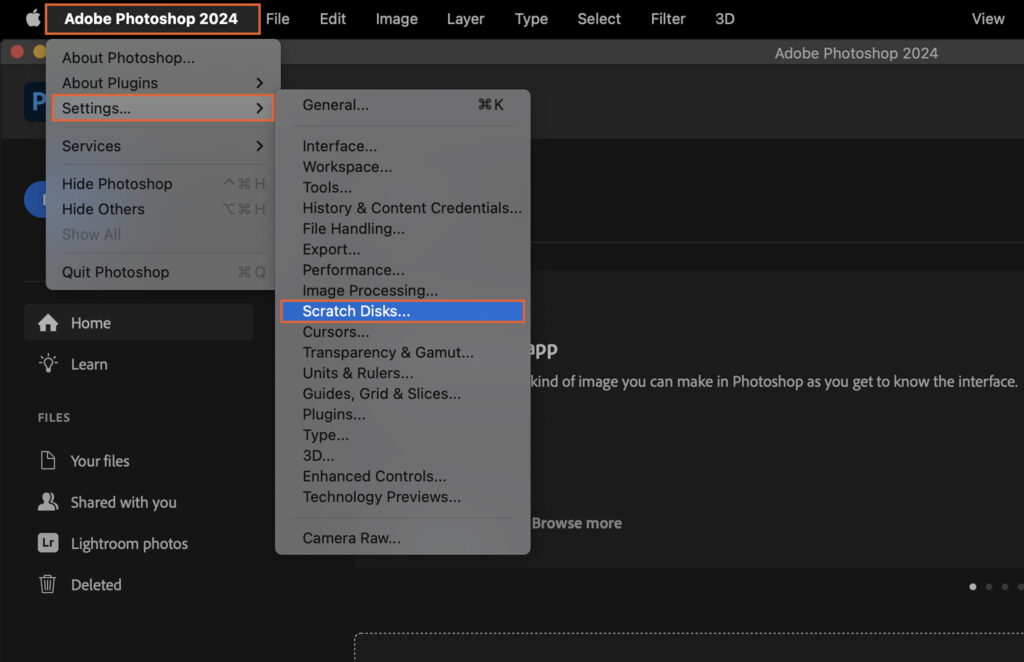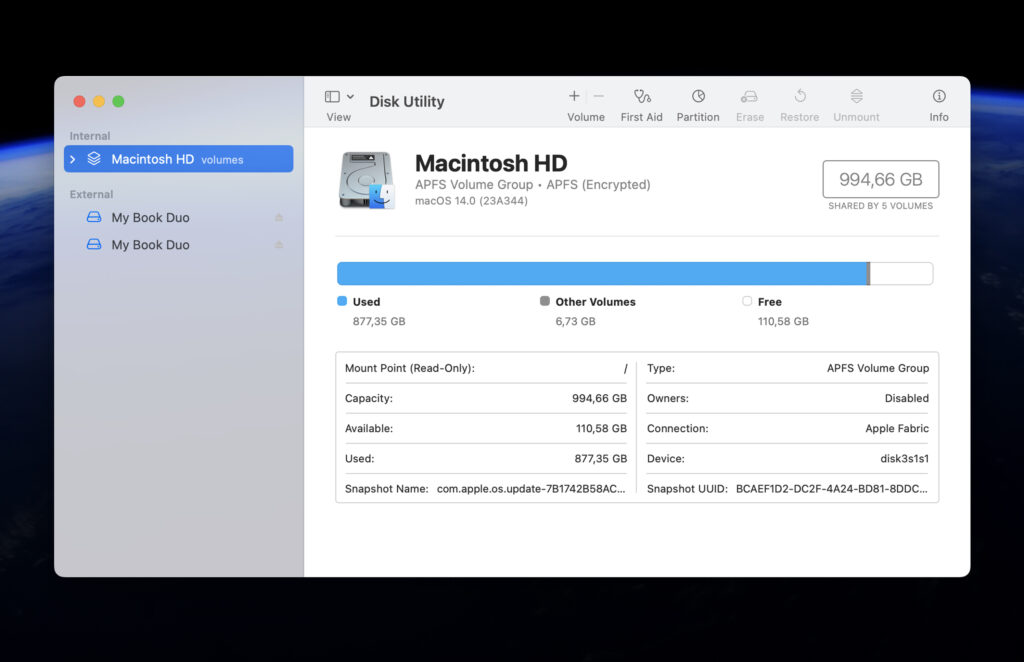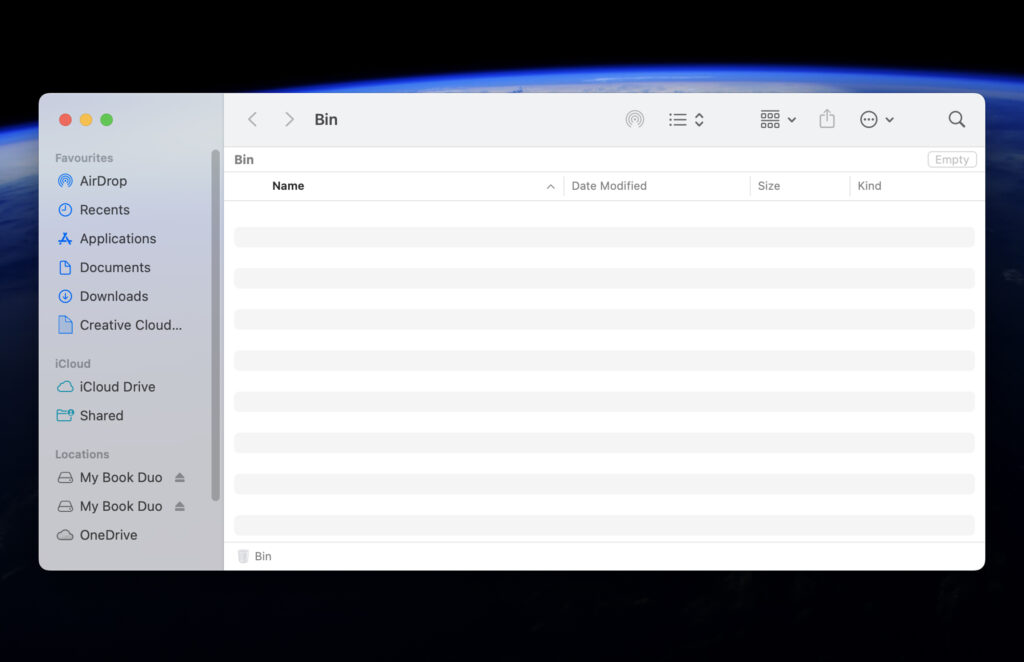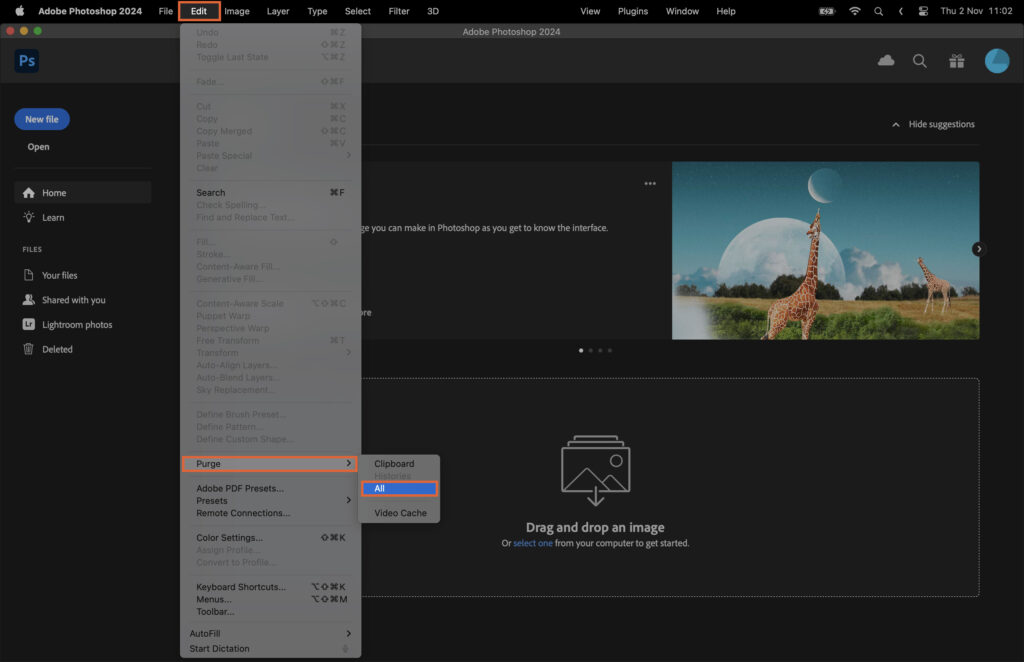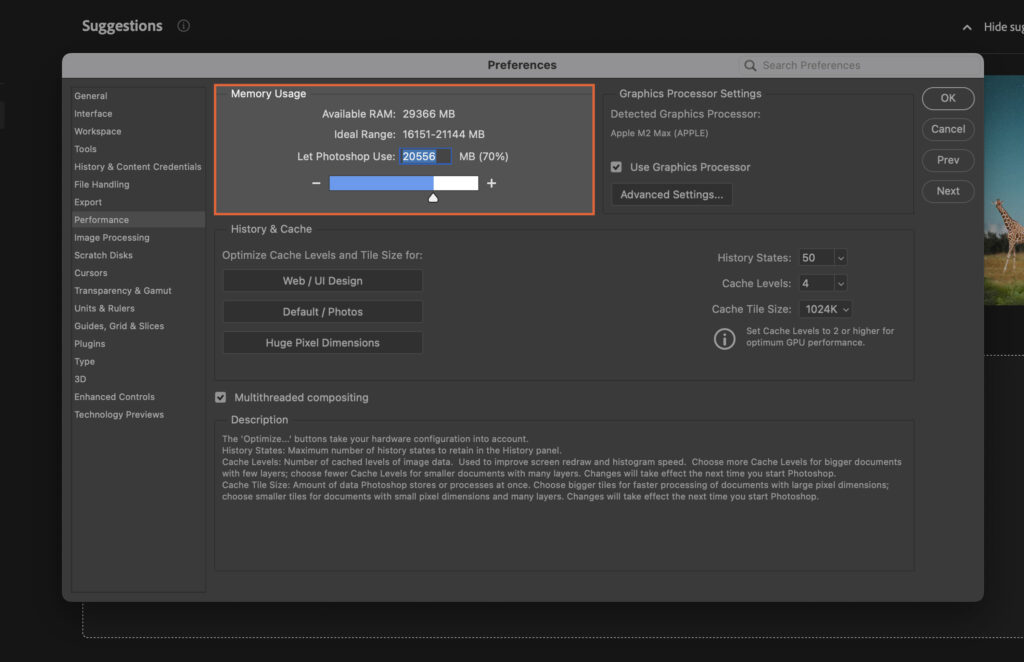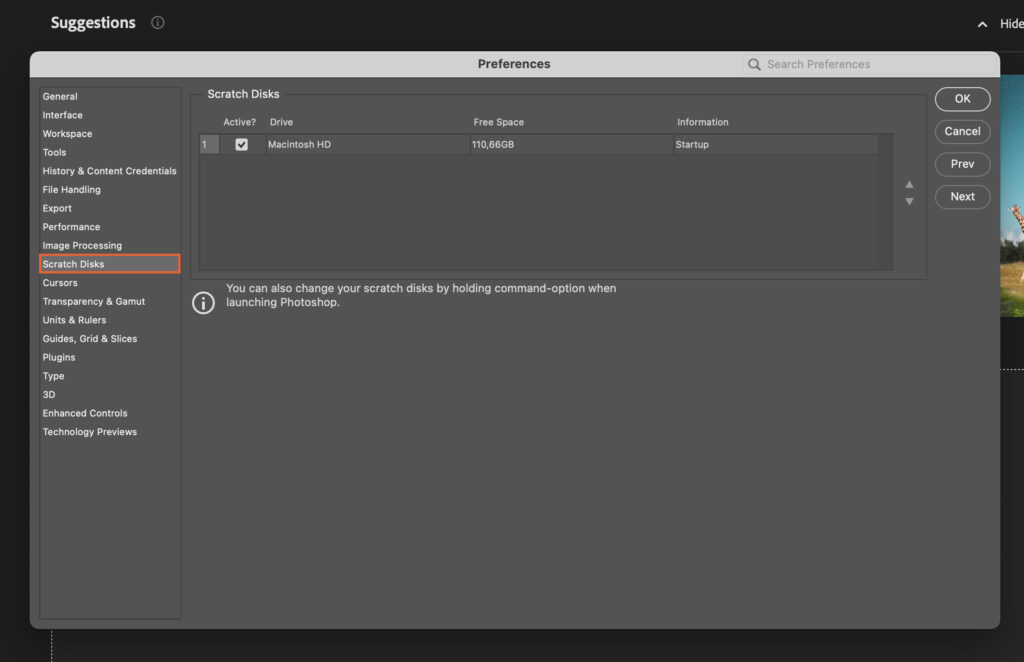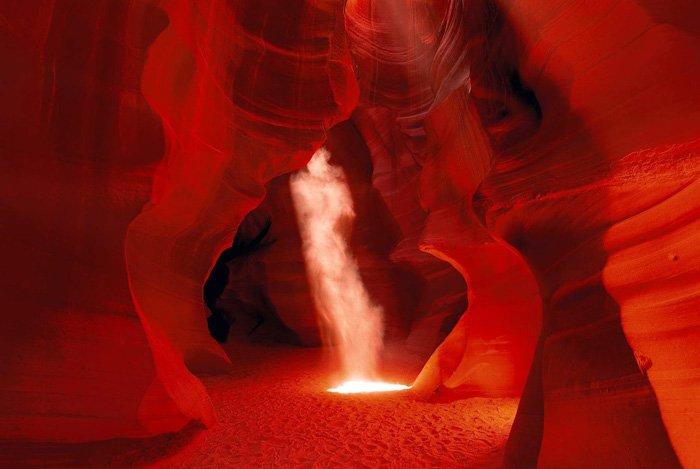How to Clear Scratch Disk in Photoshop
Experiencing slow performance or error messages in Photoshop? The culprit might be a full scratch disk. This article guides you through the process to clear scratch disk, enhancing your Photoshop experience by speeding up operations and preventing crashes.
Step 1. Understand What a Scratch Disk Is
A scratch disk is a designated drive or partition in your computer where Photoshop stores data when your system runs out of RAM. It’s essentially a temporary storage space that Photoshop uses to run smoothly, especially when handling large files.
Step 2. Check Your Current Scratch Disk
To review your current scratch disk settings, open Photoshop and go to Edit > Preferences > Scratch Disks (Adobe Photoshop (Top left corner)> Settings > Preferencies on MAC). Here, you’ll see a list of active and available drives that Photoshop can use as scratch disks.
Step 3. Free Up Space on Your Current Scratch Disk
If your scratch disk is full, Photoshop may slow down or stop working. To avoid this, clear up some space.
Step 3.1 Delete Unnecessary Files
Go through the drive designated as your scratch disk and delete any unneeded files. This may include old documents, downloads, or software you no longer use.
Step 3.2 Empty the Trash or Recycle Bin
Don’t forget to empty your Trash (macOS) or Recycle Bin (Windows) to permanently delete files and free up space.
Step 4. Clear Photoshop's Cache
Photoshop caches are temporary files that help the software run faster. However, they can take up a lot of space over time.
Step 4.1 Use the Purge Command
To clear Photoshop’s cache, go to Edit > Purge > All. This will delete all history and clipboard copies.
Step 4.2 Delete Temporary Files
Photoshop sometimes leaves behind temporary files. These can typically be found in your system’s temp folder and can be safely deleted.
Windows:
C:UsersYour UsernameAppDataLocalTemp
Mac:
- Open “Terminal”
- Write this: “open /tmp”
- Delete “Photoshop Temporary”
Step 5. Increase the Scratch Disk Capacity
If you’re frequently running out of scratch disk space, consider increasing its capacity by adding a bigger ssd.
Step 5.1 Allocate More RAM to Photoshop
You can allow Photoshop to use more of your system’s RAM by going to Edit > Preferences > Performance. Increase the Memory Usage percentage to give Photoshop more RAM to work with.
Step 5.2 Add a Secondary Scratch Disk
You can assign an additional scratch disk by going to Edit > Preferences > Scratch Disks. Choose another drive from the list to act as a secondary scratch disk.
Step 6. Change the Scratch Disk Location
If you have multiple drives, you can change the scratch disk to a less busy drive. Go to Edit > Preferences > Scratch Disks, deselect the current drive, and select a new one.
Step 7. Restart Photoshop
After making these changes, close and restart Photoshop to apply them.
Step 8. Seek Professional Help If Problem Persists
If you’re still experiencing issues after trying these steps, it may be time to consult a professional. Contact Adobe support or a local tech expert for further assistance.
